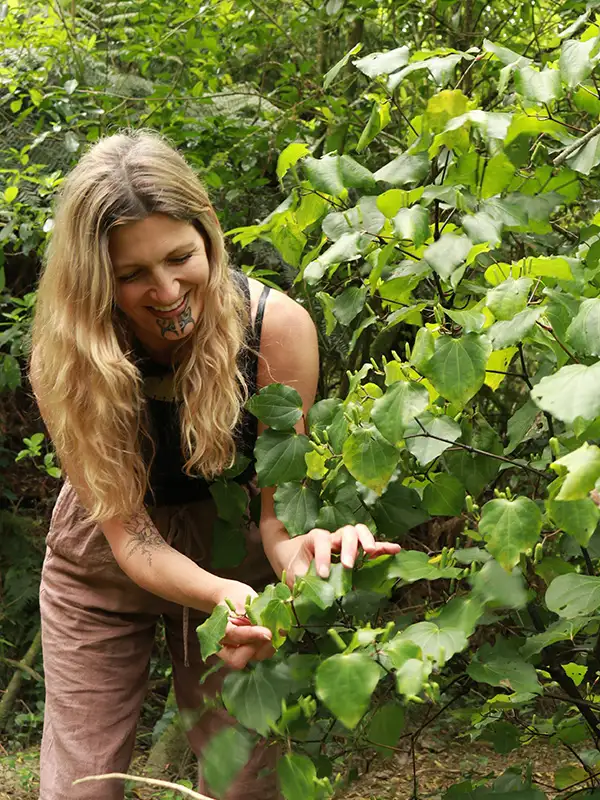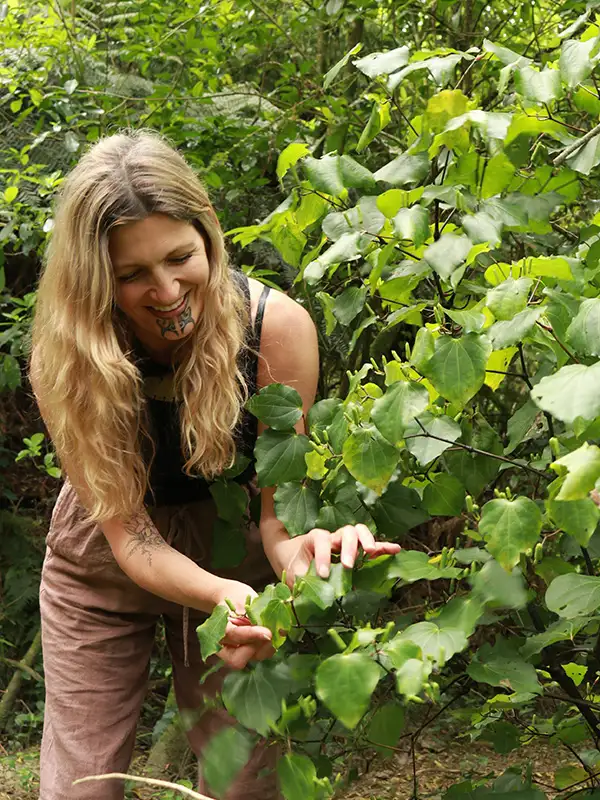
Connecting through nature

11 November 2022
Kelly Jarvis’ mahi takes her places. On any given day you might find her walking up a stream, in a field of buttercups, or surrounded by native forest.
The ecotherapist and rongoā practitioner runs Puawai Nature Therapy at Te Wakahuia Manawatū Trust, a kaupapa Māori community health service in Palmerston North.
Kelly takes whānau, tamariki and rangatahi, some as young as 10, into nature. Arriving at their destination is a chance to breathe in fresh air, place their bare feet upon the ground and tap into all their senses as they soak in the surrounds.
"My work is grounded in the concept of hononga , connections, exploring the intrinsic relationships between people, wairua , and te taiao . The magic and interconnectedness of everything around us in the natural world," says Kelly.
A place that feels like home
"I take people out to the spaces that, over the years, I’ve built a relationship with myself. I know the area and have taken time to learn the whakapapa of the place."
Many who Kelly works alongside have never been to their marae. Some don’t know their iwi .
Bringing them out into nature gives them an opportunity to discover more about their identity, to learn the stories of the natural world. There, they can literally place their hands upon the ground and have a direct connection to one of their tīpuna, Papatūānuku.
A learning opportunity
Kelly says ecotherapy is something everyone can benefit from, regardless of age.
"Getting out into nature is essential for our tamariki. It’s about taking their lead and talking to them about what they show interest in."
Learning the names and stories of our native flora and fauna is a great place to start.
"Kids are really excited when you’re exploring the ngahere . It’s also a great opportunity to unleash your inner child and join tamariki in their experience – carefully look under logs to see who lives there. Speak to the feeling of the mud between your toes, the crunching of the leaves under your feet. Just take your time, make it about the journey, not the destination."
Nature art is another option. A bush walk provides endless opportunities for children to collect treasure – gather fallen leaves and sticks, or earth pigments to paint with.
Another option is to create a mandala with an ombre of leaves, form magical creatures from sticks and mud, or make your very own ukutangi, a taonga pūoro made from clay, says Kelly.
The natural world is one of our greatest teachers and understanding how we belong within that space develops a strong understanding of kaitiakitanga and our obligations to care for, protect and heal our environment, each other, and ourselves.













